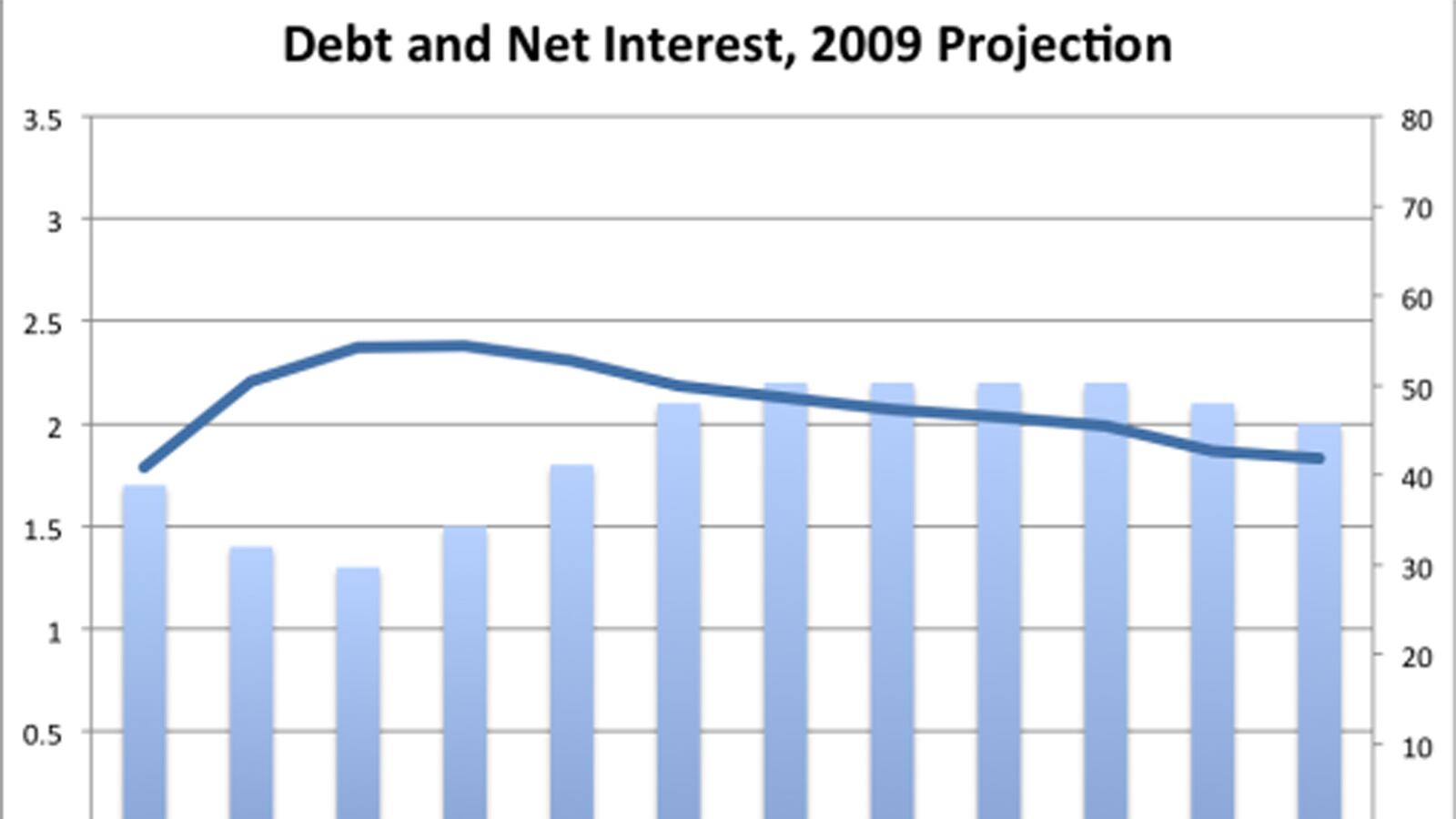The CBO released its 2013 Budget and Economic Outlook today. Here's your takeaway graph:
Federal debt around 80% of GDP for the foreseeable future is a pretty disturbing number. Here's how that number has evolved over the CBO projections from 2009 to now:
And here's the history of their forecasts of revenue and outlays
This year's projections are substantially worse than last year's--and much, much worse than 2009 and 2010. That's not because the CBO are bad forecasters; it's because the economy keeps not recovering as expected, and because Congress keeps changing the law to make it more expensive. By law and custom, the CBO is required to make unrealistic assumptions that "current law" will continue, such as assuming that Congress will allow the doc fix to expire and slash Medicare reimbursements to doctors by 30%. So some of this was always baked in.
In the "fiscal cliff" deal, Congress made a lot of stuff permanent. Some of that was acknowledging the inevitable, like fixing the alternative minimum tax. Some of it was unnecessary giveaways, like making the Bush tax cuts permanent for most brackets. Either way, we're now looking at a more expensive government.
Here's another way to look at it: the level debt and net interest payments that the CBO has projected for 2019. Each year represents the projection from that year's Budget and Economic Outlook:
And here's what they thought the deficit would look like. Notice that the most optimistic projections were 2009 and 2012. This year we've reverted to some very pessimistic numbers.
The good news is that our projections for 2019 have improved somewhat. The bad news is that projections are rapidly moving into the expensive 2020s, where most of the boomers have retired. And the worse news is that when you look over the past forecasts for 2009-2012, and compare them to the actual numbers, we haven't had many big upside surprises. If that's still true in 2020, we may be in big trouble.





